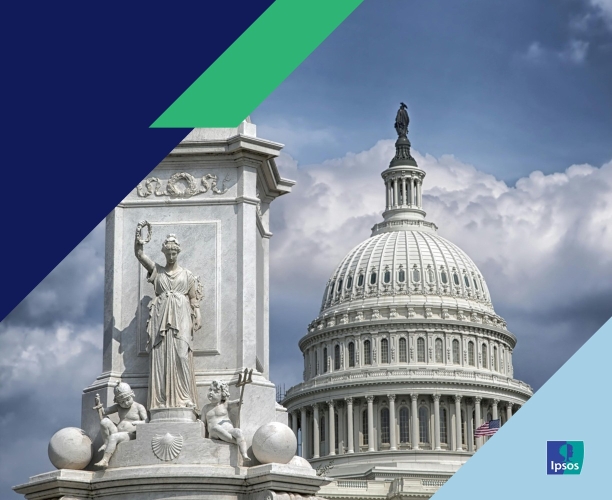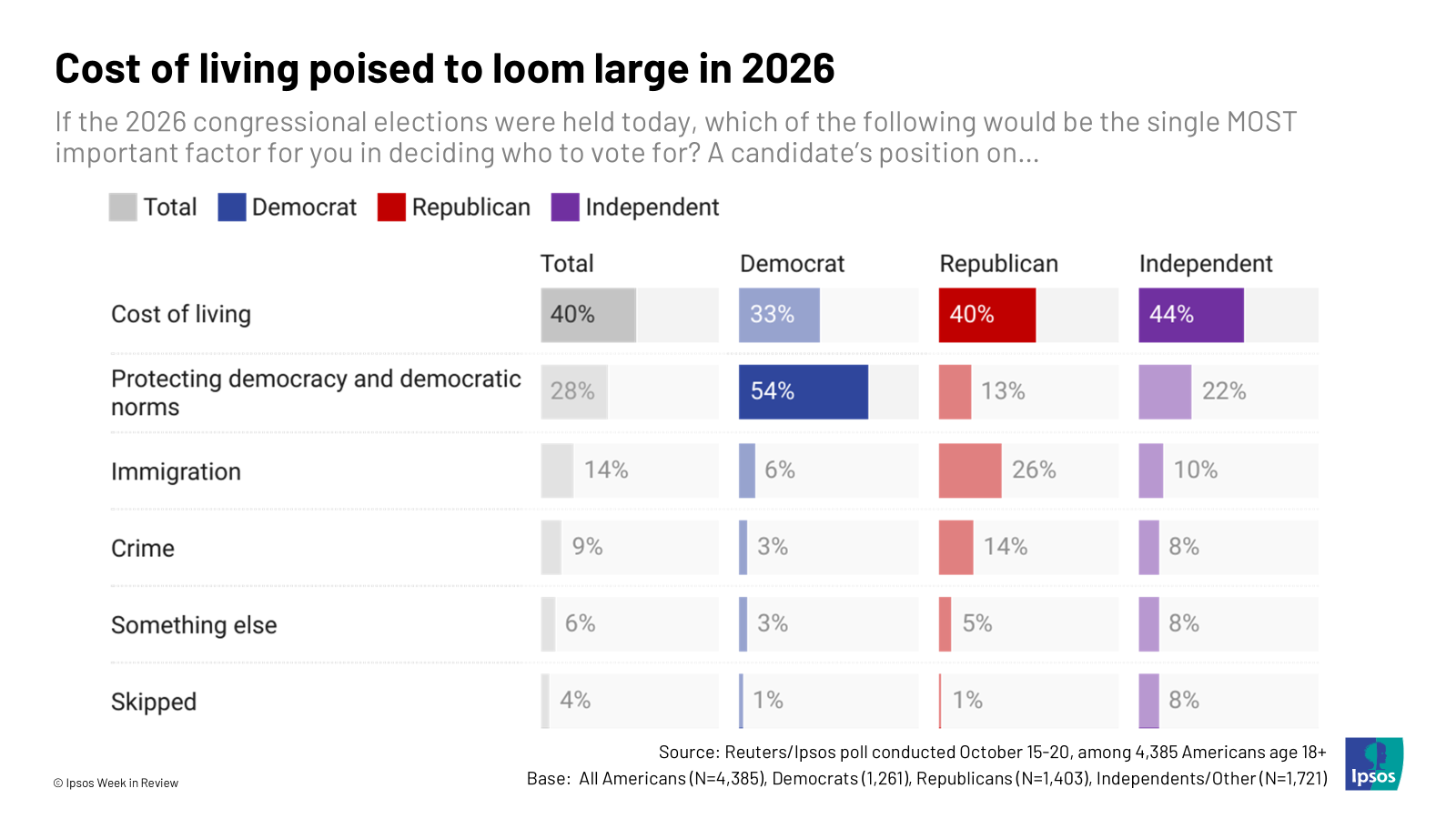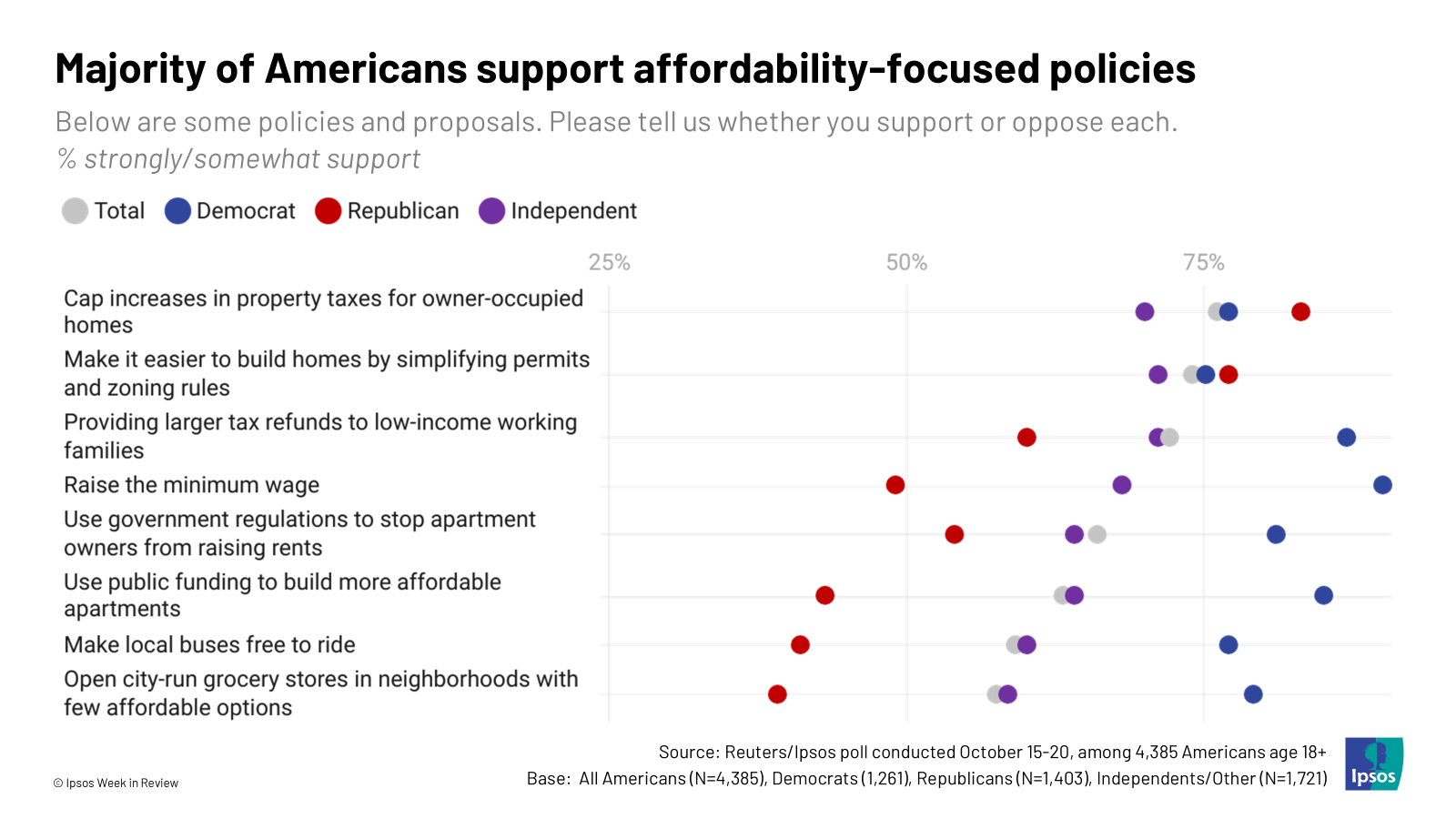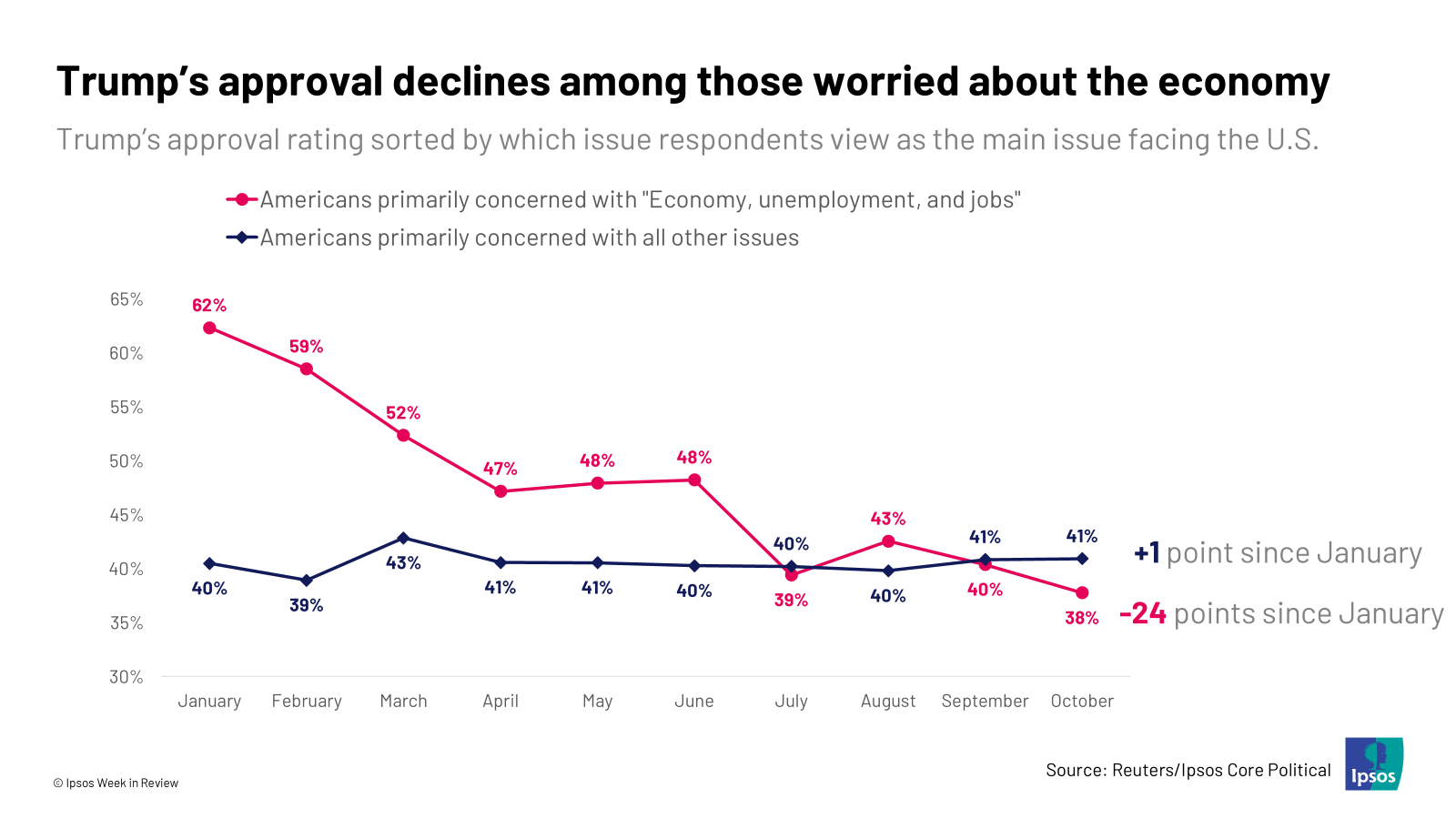

Lessons from the 2025 elections
On Wednesday, President Donald Trump celebrated the one-year anniversary of his second stint in the White House.
One day later, the 2025 elections, headlined by larger-than-expected Democratic victories in New York, Virginia, and New Jersey, offered the first clues as to how both parties will need to adjust in a post-Trump political landscape.
Below are five charts on where the political landscape stands after the 2025 elections.
- It’s the economy, silly. Ipsos analysis shows that the candidate that performs better on the main issue wins an election 85% of the time. Zohran Mamdani seized on this in his affordability-focused campaign in the New York City Mayoral election. Right now, the main issue is the economy and prices. Barring a black swan event (such as the COVID-19 pandemic), the economy and prices will likely remain the main issue in 2026.

- Voters want answers on affordability. A big component of Mamdani’s appeal was his specific and targeted policies, as well as messaging, around making life more affordable for New Yorkers. The polling shows that Americans are drawn towards those policies. Even policies that are generally considered “progressive” are backed by a majority of independents. The bottom line is that real people are worried about real things—groceries, rent, daily costs, and so on. Without answers, you lose voters.

- Trump has lost ground on the economy. Some combination of the lingering effects of “Bidenflation,” negative views of tariffs, and a softening labor market have contributed to Trump’s approval softening among Americans most concerned about the economy. Negative views of the economy punished Biden and the Democrats in 2024. If perceptions of the economy do not improve, the same could happen to Trump and Republicans in 2026.

- Democrats are regaining non-white and youth voters. Exit polls showed that non-white and young voters in Virginia flipped away from Republicans, after flipping towards Trump in 2024. The same trend is occurring at the national level.

- Are Democrats warming up to populism? The majority of Americans – and a supermajority of Democrats – believe the economy is rigged in favor of the rich and powerful. Mamdani connected with voters because he spoke to those concerns and showed how Democrats can frame the belief that the “system is broken” economically, not culturally. Republicans were first to embrace populism. Democrats may be starting to catch on.

Since Donald Trump entered politics, Republicans have historically struggled in elections where his name is not on the ballot. They must figure out a way turn out the low-turnout voters that Trump attracted and win back the gains Trump made among young and non-white voters. In elections where turnout is higher, this might be easier. But it may still be an uphill battle given Americans’ pessimistic views on the economy. Republicans’ short-term success will likely hinge on economic conditions improving – and whether the public gives Republicans credit.
On the other hand, Democrats have made “countering Trump” a big aspect of their appeal. Exit polls show that dissatisfaction with Trump was a key driver in Democratic turnout in this year’s elections. Democrats may be able to count on negative partisanship in 2026, but beyond, Democrats will need to create an identity of their own in a post-Trump political landscape. A populist economic platform aimed at affordability may be one step on the way there.



